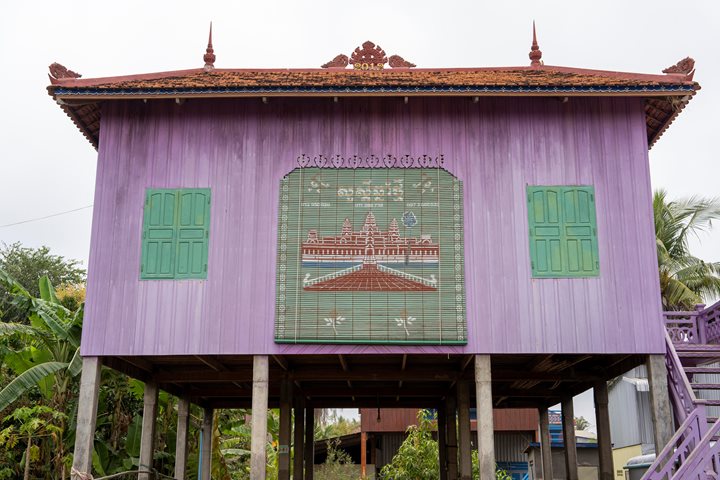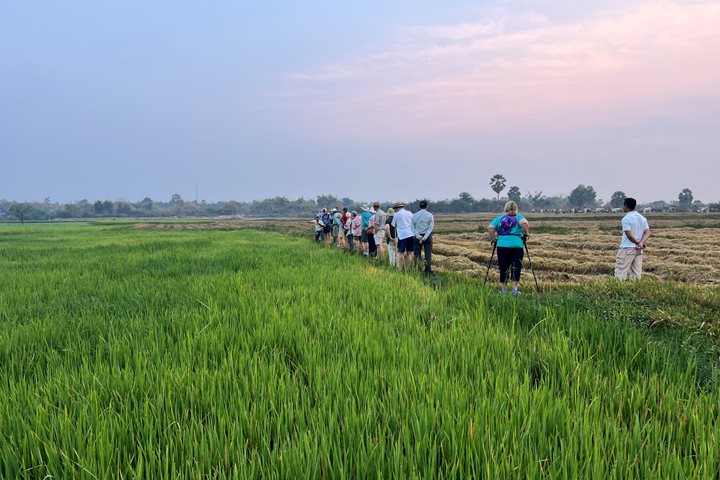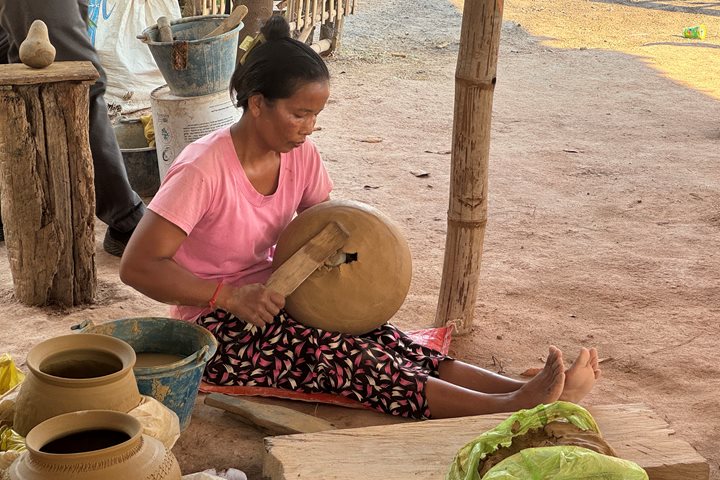Kampong Cham to Siem Reap; Ta Prohm Temple
We say farewell to the marvellous crew of the Jahan, who, after helping us and our baggage up the precipitous bank of the Mekong (the river is lower than most of us have ever seen it this dry season) to our buses, stand and wave goodbye. The buses are roomy and the road is good; traffic is fairly light and the drivers are skilful in avoiding the sudden turns of goods-laden trucks ahead. We pass through a series of rubber plantations, some quite recently planted, and see stands of cashew – a good cash crop for this area. We are kept entertained by two fresh and excellent guides from Trails of Indochina.
One stop at the “happy room” just beyond Kampong Thom and we arrive at Siem Reap slightly ahead of schedule. We are early to check in at the luxurious La Résidence d’Angkor, so are invited up to the bar area where we meet Karin the General Manager and are provided with refreshing fruit drinks. This is a modern, comfortable hotel, but built and equipped with distinctive Cambodian touches.
After taking the time for the briefest wash and brush-up, we head out to the Angkor temple complex. It has been raining intermittently on the way up from Kampong Cham – a rare phenomenon at this time of the year – and the sky opens as our buses move toward our first stop: the exotic and mysterious Ta Prohm, a monastery built by the Buddhist King Jayavarman VII and, after his time, dedicated by his Hindu successors to the god Brahma. Amid all the clearing of forest growth and reconstruction of the Angkor monuments undertaken over the past century or so, Ta Prohm was left very much alone: it is overgrown with large Ficus trees, the huge roots of which have become part of the structures themselves. If they were removed, much of the temple would come crashing down.
The rain turns out to have been a considerable blessing – we suffer the indignity of getting quite wet and/or muddy wading through inches-deep puddles and scrambling over low rock walls to get to the inner courtyard, but it is all well worth it. The laterite walls and sandstone superstructures, when soaked from the earlier downpour, take on a life and color that stuns the senses. This is a truly beautiful experience. In recent years, a number of wooden stairways and boardwalks have been constructed to make it easier for visitors to get around in a comfortable and orderly way, but that does not take away from the overall loveliness of the temple, with its simple structure and massive towers. There is a fair amount of reconstruction going on, but it is aimed only at safety, not at changing the experience of this unique site.
After a short rest in the evening, we enjoy a group “barbeque,” moved to the dining room because of the earlier rainfall. All are happy to retire early in anticipation of a 5:00am departure the following morning to view the iconic Angkor Wat at daybreak.






